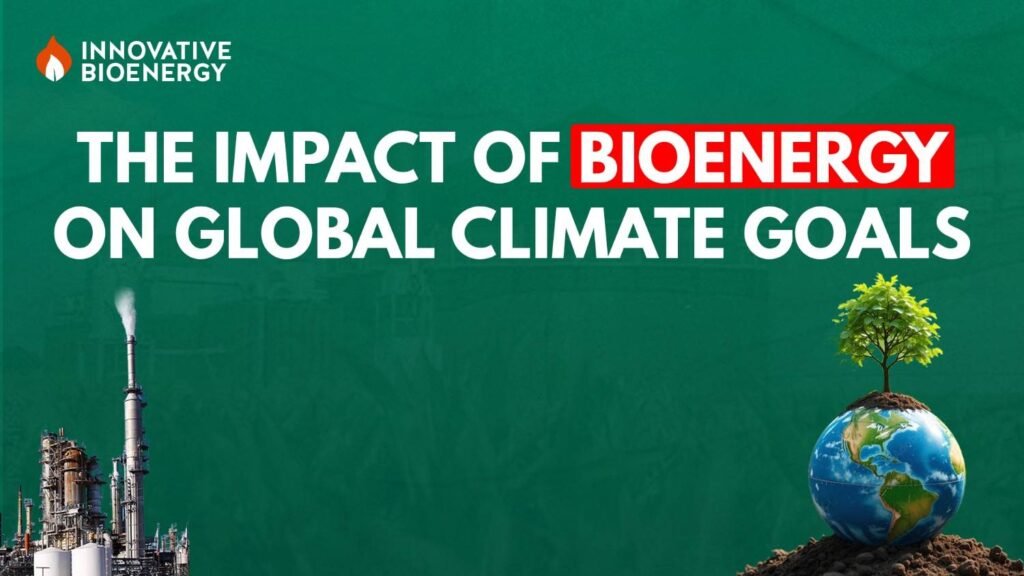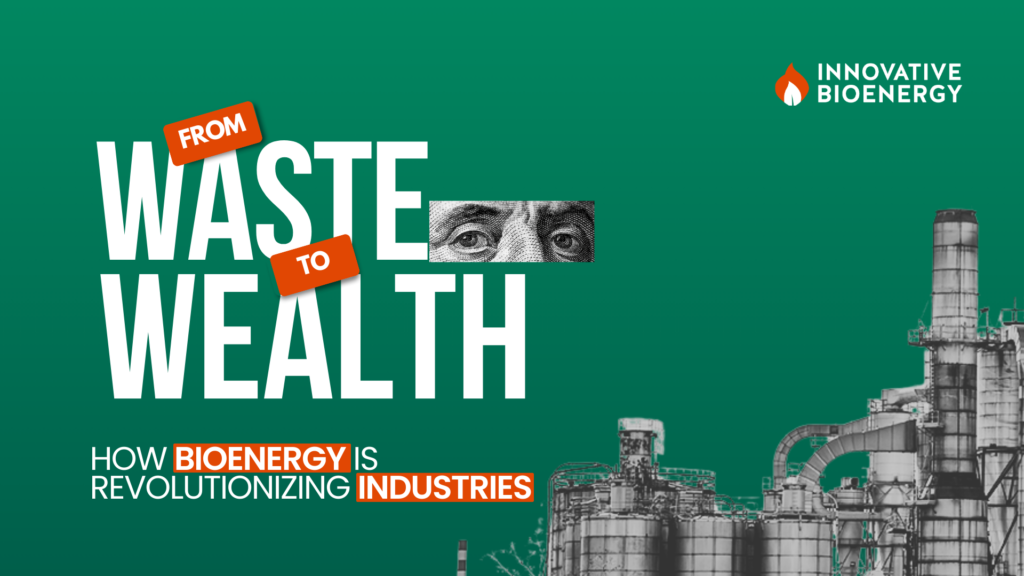Climate change is accelerating, and the window to keep global warming below 1.5°C is quickly closing. Many sectors, including heavy industry, aviation, and shipping, are difficult to decarbonize, and clean alternatives are often limited or too costly. Without effective solutions, achieving global climate goals becomes increasingly unrealistic.
This is where bioenergy becomes essential. As a renewable energy source derived from biomass, agricultural waste, and organic residues, bioenergy provides a low-carbon, scalable solution for reducing emissions in hard-to-abate sectors. It plays a critical role in the energy transition by supporting climate targets and strengthening energy systems.
At Innovative Bioenergy, we are leading this change by converting agricultural and industrial waste into sustainable, cost-effective energy. Our approach not only supports global decarbonization goals, it also delivers real socio-economic benefits by creating jobs, promoting rural development, and enhancing energy security.
In this article, we’ll explore how bioenergy contributes to global climate goals, the environmental and economic advantages it offers, and the strategies needed to scale it sustainably and responsibly.
What is Bioenergy?
Bioenergy is renewable energy derived from biological materials such as energy crops, woody biomass, organic waste, and agricultural residues. It can be converted into heat, electricity, and biofuels for transport, making it a versatile energy source that complements other renewable energy sources like solar, wind, and hydropower.
Bioenergy’s Role in Meeting Climate Targets
Decarbonizing Hard-to-Abate Sectors
Certain sectors like heavy industry, aviation, and shipping are difficult to electrify and decarbonize. Bioenergy provides a low-carbon alternative fuel, including Biomass such as wood pellets and wood briquettes, biofuels such as bioethanol and biodiesel, that can replace fossil fuels in these sectors, helping to reduce greenhouse gas emissions significantly.
Want to dive deeper? Read our blog on how bioenergy is decarbonizing heavy industries in Pakistan.
Contribution to Climate Change Mitigation
The International Renewable Energy Agency (IRENA) forecasts that bioenergy’s share of total final energy consumption must nearly triple from 7% today to over 18% by 2050 to keep warming below 1.5°C. Sustainable biomass and bioenergy are therefore crucial to achieving the Paris Agreement’s goals and the broader Sustainable Development Goals (SDGs).
Carbon Negative Potential via BECCS
Bioenergy combined with carbon capture and storage (BECCS) can remove CO₂ from the atmosphere by capturing emissions during bioenergy production and storing them underground. This carbon capture technology is pivotal for net-zero emissions pathways and negative emissions strategies.
Environmental Benefits of Bioenergy
- Reduction of Fossil Fuel Use: By replacing coal, oil, and natural gas, bioenergy cuts down on carbon footprint and greenhouse gas emissions.
- Methane Emission Mitigation: Utilizing waste streams for bioenergy captures methane, a potent greenhouse gas, preventing its release into the atmosphere.
- Energy System Resilience and Energy Security: Bioenergy’s storability and dispatchability enhance energy security and grid stability, complementing intermittent renewables and supporting the global energy transition.
This graph highlights how bioenergy can significantly cut CO₂ emissions across key sectors.

Socio-Economic Advantages
- Rural Economies and Job Creation: Bioenergy projects boost rural economies by creating jobs in agriculture, sustainable forestry management, processing, and energy sectors.
- Energy Access and Security: It supports clean energy access in remote areas, reducing dependence on imported fossil fuels and enhancing energy sovereignty.
- Poverty Alleviation and Gender Equality: Sustainable bioenergy initiatives can empower marginalized communities, promoting equitable economic growth aligned with circular economy principles.
Challenges and Sustainable Governance
Sustainable bioenergy development must address risks related to land use, food security, biodiversity, and carbon stocks. Good governance, robust policy frameworks, and strict sustainability criteria are essential to ensure bioenergy’s positive climate and development impacts without compromising ecosystems or social equity.
Policy Recommendations for Scaling Bioenergy
- Promote international cooperation to establish sustainability standards.
- Encourage investment opportunities in bioenergy infrastructure and supply chains.
- Support research and innovation in bioenergy technologies and carbon capture technologies.
- Integrate bioenergy into national climate and energy plans to accelerate the energy transition.
Conclusion
Bioenergy plays a crucial role in the global transition to a low-carbon future. Its ability to decarbonize challenging sectors, provide renewable energy, and deliver socio-economic benefits makes it indispensable for meeting international climate goals. However, realizing its full potential requires sustainable practices, effective governance, and supportive policies to balance environmental protection with development needs.
With the right support, bioenergy can turn today’s waste into tomorrow’s wealth, powering progress while protecting the planet. At Innovative Bioenergy, we are leading this transformation by converting agricultural and industrial waste into cost-effective, sustainable energy solutions.
Curious how waste becomes wealth? Explore our blog: From Waste to Wealth: How Bioenergy Is Revolutionizing Industries



